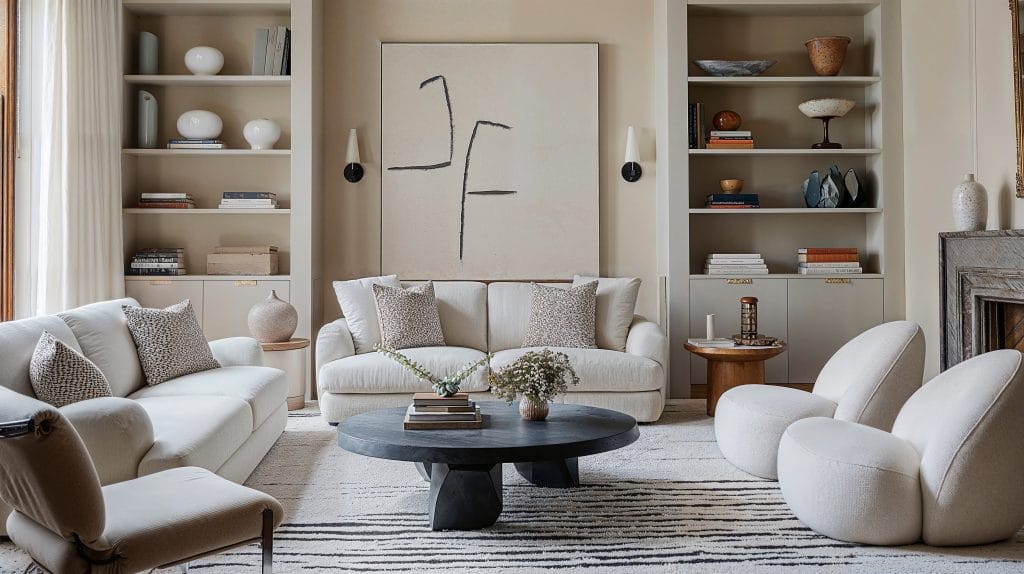A top-rated Architecture Firm crafts innovative and functional designs.
A top-rated Architecture Firm crafts innovative and functional designs.
Blog Article
Change Your Home With Important Principles of Interior Layout and Looks
By comprehending the impact of shade theory and the importance of texture and patterns, one can develop areas that are not only aesthetically attractive however also deeply individual. Accomplishing this equilibrium entails more than mere decor; it includes a tactical setup and an eager understanding of how each component communicates within a space.
Recognizing Color Concept
Color concept is an essential aspect of interior decoration that significantly affects mood, assumption, and total visual. Understanding the principles of shade concept enables developers to create rooms that resonate emotionally with residents while fulfilling practical requirements (Architecture Firm). Colors can be categorized right into three key types: main, second, and tertiary. Each category plays a critical duty in establishing consistency within a room.
The mental influence of shades is profound; warm colors such as reds and oranges stimulate energy and heat, while cool tones like blues and eco-friendlies promote calmness and harmony. Additionally, the usage of complementary colors enhances visual rate of interest, producing striking contrasts that can raise an area's allure.
Neutral shades, on the various other hand, act as a flexible background, allowing other layout aspects to radiate. It is necessary to take into consideration variables such as lights and the room's purpose when selecting a shade scheme, as these can modify the assumption of shades throughout the day.
Inevitably, a well-considered color design can change an area, fostering a sense of comfort and design that straightens with the citizens' choices. Mastery of shade concept is, consequently, an essential ability for any type of interior developer intending to produce harmonious and inviting settings.
Attaining Balance in Design
Exactly how can developers accomplish a feeling of balance in their areas? Achieving equilibrium in design is basic to creating unified interiors.
Unbalanced balance, on the various other hand, depends on varying elements that still accomplish a cohesive appearance. This method enables more vibrant and casual arrangements, giving rate of interest while keeping balance. By meticulously choosing differing sizes, shades, and textures, developers can create an aesthetically engaging room that really feels balanced yet energetic.
Radial equilibrium emphasizes a central prime focus with elements radiating exterior. This style is commonly seen in circular formats, where furniture and decoration develop a cohesive border that attracts the eye inward.
Ultimately, attaining equilibrium requires thoughtful factor to consider of scale, proportion, and the connections in between components. Architecture Firm. By masterfully using these equilibrium concepts, developers can change spaces right into atmospheres that feel both visually pleasing and functionally harmonious, improving the general experience for passengers
Value of Spatial Recognition

An eager feeling of spatial recognition allows moved here designers to identify focal points within a room, leading the viewer's attention to essential functions while preserving a general feeling of unity. It also aids in the tactical placement of illumination, which can substantially affect the assumption of room and mood. Additionally, understanding spatial relationships enables the designer to satisfy the particular requirements of occupants, making sure that each area serves its intended purpose without endangering looks.
Ultimately, spatial awareness is critical for maximizing the look at this website possibility of any type of interior room. By thoroughly considering the interaction between dimensions, format, and function, developers can produce atmospheres that not only fulfill functional requirements yet likewise stimulate a feeling of comfort and beauty, boosting the overall living experience.
Including Structure and Patterns
Welcoming a diverse series of structures and patterns can significantly boost the visual and responsive appeal of an indoor area. The strategic use numerous materials-- such as timber, metal, material, and stone-- creates depth and passion, making a space really feel more welcoming and dynamic. For instance, integrating smooth surface areas with rough structures can develop a balance that attracts the eye and involves the senses.
When integrating patterns, take into consideration both scale and repeating. Huge patterns can act as focal factors, while smaller, subtle styles can enhance various other elements without overwhelming the area. Layering patterns, such as pairing flower pillows with candy striped throws, adds complexity and a sense of harmony if executed attentively.
It is additionally crucial to maintain a cohesive shade scheme, ensuring that appearances and patterns collaborate as opposed to compete for attention. By picking a couple of crucial structures and patterns, you can create a combined aesthetic that reflects your individual design while improving the overall setting of the space. Ultimately, the careful unification of these components can change a mundane space right into an innovative environment abundant with character and warmth.
Individualizing Your Room
Producing an area that shows go to this web-site your personality is essential to accomplishing a really welcoming atmosphere. Personalization in interior decoration allows you to instill your distinct design and rate of interests into your home, changing it from a simple sanctuary into a sanctuary that talks to who you are. Begin by picking a color scheme that reverberates with your feelings-- strong hues can stimulate, while soft tones offer peace.
Incorporate artwork and decor that mirror your interests, whether it be travel, nature, or abstract principles. Showing individual collections, such as publications, photos, or keepsakes, can evoke valued memories and create centerpieces within a room. In addition, think about customizing practical items, like upholstered furniture, to line up with your visual preferences.

Verdict
Finally, the improvement of a home via the important principles of indoor design and aesthetic appeal demands a comprehensive understanding of shade concept, balance, spatial recognition, texture, and customization. Each component adds considerably to developing an unified and practical living atmosphere - miami interior design. By attentively incorporating these concepts, people can enhance the visual charm and psychological vibration of their areas, inevitably cultivating a home that mirrors special identifications while giving convenience and usefulness
Report this page